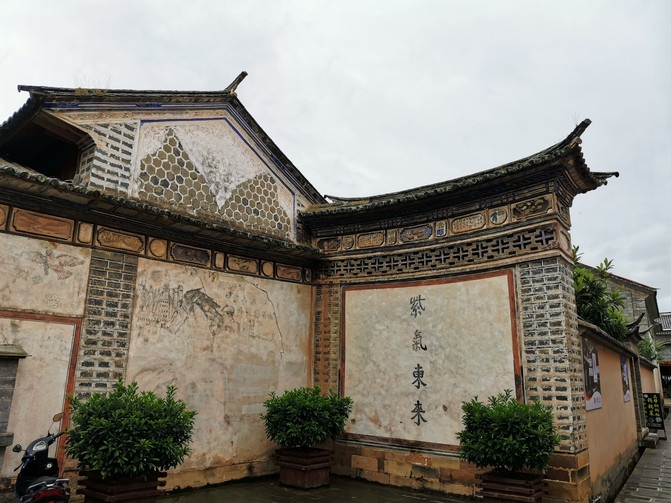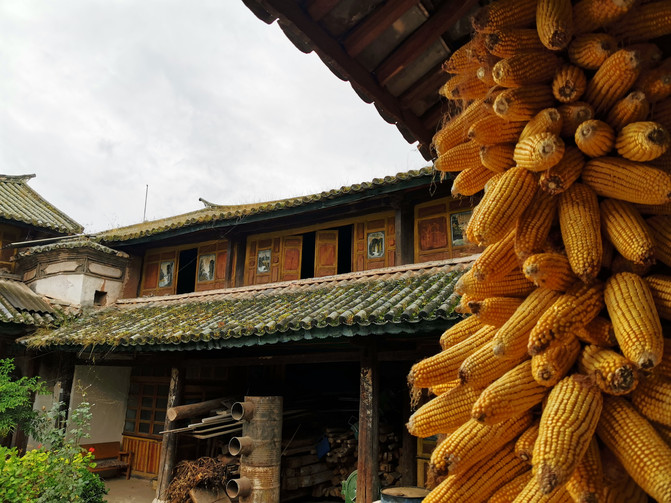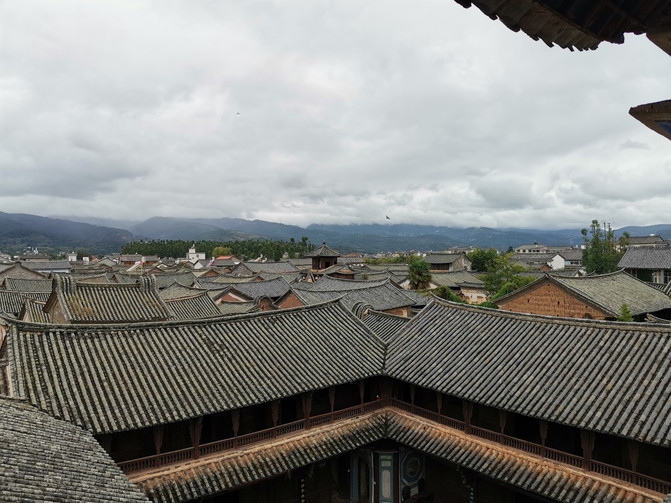The legacy of the horse gang

Donglianhua Village is located in Yongjian Town, northeast of Weishan County under the jurisdiction of Dali City. It was built in the middle of the Ming Dynasty. It is a pure Hui natural village. It is located on the Mitang River, a tributary of the Red River. It is surrounded by water on three sides and has a beautiful environment. The ancient village has well-preserved features, rich Islamic culture, and a long history of horse gangs. In October 2007, it was named a National Historical and Cultural Village by the Ministry of Housing and Urban-Rural Development and the State Administration of Cultural Heritage. On the morning of October 21, 2020, while it was still drizzling, I drove to Donglianhua Village.




After passing through a lotus pond that is already dead, and walking into Donglianhua Village, which has a history of more than 600 years, you will be attracted by its completely preserved ancient village style. Looking around, there are rows of ancient buildings and houses in the village, and the exquisite houses have a strong Islamic architectural style and distinctive characteristics. It is said that there are more than 30 ancient buildings with unique architectural styles and profound historical and cultural connotations in Donglianhua Village. The buildings are relatively concentrated during the Qing Dynasty and the Republic of China. There are 10064 square meters of buildings in the Qing Dynasty and 17966 square meters of buildings in the Republic of China. There are 28 ancient houses in architectural styles such as three rooms, one light wall, and four in five patios.


The Donglianhua Village Mosque, built in the early years of the Qing Dynasty, is a beautiful scenery among the ancient buildings of Donglianhua Village. This mosque has been expanded many times, and the building is now completed in the twelfth lunar month of the 13th year of the Republic of China (1924). The entire mosque is made of civil structure, perfectly combining the traditional Chinese architectural styles of pavilions, carved beams and painted buildings with Arab-Islamic aesthetic concepts.

The most beautiful thing about Donglianhua Village Mosque is this Xuanli Building, which also serves as the gate building of the mosque. It is solemn and beautiful.


The chapel of the East Lotus Mosque also has a unique architectural style. Different from the architectural style of ordinary mosques, this chapel has more of the style of an ancient Han architectural hall.

The courtyard is lined with trees and the fragrance of flowers is elegant. The mosque and the surrounding ancient residential buildings are combined into a natural and harmonious blend, creating a unique cultural heritage of the ancient Islamic village.






After leaving the mosque and walking along the streets and alleys of the village, the ancient houses on both sides are either simple or rich. As time passes, the walls are mottled, revealing the vicissitudes of history.


Strolling into an ordinary farmyard, the golden corn hanging under the eaves lit up this somewhat dilapidated ancient building and residential courtyard.

Donglianhua Village is located on the ancient tea-horse road. During the late Qing Dynasty and the Republic of China, the East Lotus Horse Gang had a long reputation for transportation. In the early years of the Republic of China, Donglianhua Village became a Guotou settlement of the Horse Gang and a material transfer and distribution center in western Yunnan.




During the prosperous years of the caravan, every family in Donglianhua Village raised horses and every household did business. The caravan gathered in the village. There were seven caravan gangs headed by Ma Ruji in Damaguotou, with a total of more than 350 horses. Donglianhua Village is full of business travel and prosperous economy. It was once referred to as "Little Shanghai".




The exquisite buildings, distinctive features and breathtaking houses in Donglianhua Village were built by Maguotou, who was running the horse caravan at that time. There are 5 corner towers and 22 ancient houses that are well preserved so far.

The Majia Courtyard built in 1930 is a representative of these exquisite dwellings. Most of the ancient buildings in the Majia Courtyard adopt the "Six Contract Spring" layout, with numerous corner towers, heavy doors and deep courtyards,"three sides and one curtain wall","four in five courtyards" and "walking horses and turning attics" are very exquisite. Whether they are illuminating walls or carving, they all reflect the harmonious coexistence and harmonious blend of Chinese traditional culture and Islamic culture. Ma Ruji's former residence is a model among the ancient buildings of the Majia Courtyard. Its architectural features are "one blockhouse, two houses, three doors, four pavilions, five halls and six courtyards." Walking into the gate, what comes into view is four large characters "Shishou Halal" engraved in a marble box, showing the owner's pious belief.

Ma Ruji's old residence was divided into north and south houses, adopting a layout of "six contracts in spring". The east and west ear rooms, halls and the main lighting wall in the south form the "three squares and one lighting wall" in the south courtyard.

Standing on the second floor and overlooking, the courtyard walls are very exquisite, complementing the courtyard dotted with flowers and plants.


The main room, east and west wing rooms, gate and corner towers of the north courtyard form the "four-in-five patio" architectural pattern.


Looking upstairs, you can see the strict architectural layout of the North Courtyard at a glance.
Although it has been eroded by years of wind and rain, every corner of Ma Ruji's old courtyard, whether it is the carefully decorated lintel, the unique flower windows and the beautiful caisson paintings in the building, still makes people feel the spirit and unique charm of the past.




Climbing the watchtower of Ma Ruji's old residence and looking into the distance, surrounded by distant mountains, the ancient buildings in Donglianhua Village are lined up one after another, vaguely showing the prosperity that flourished due to the horse gang.
Previous Article:Practical tips for traveling to Dali during the summer vacation| How can foreigners play Dali? Three "cultural" scenic spots must visit
Next Article:Interesting souls attract each other, and see you in Dali when the breeze blows
